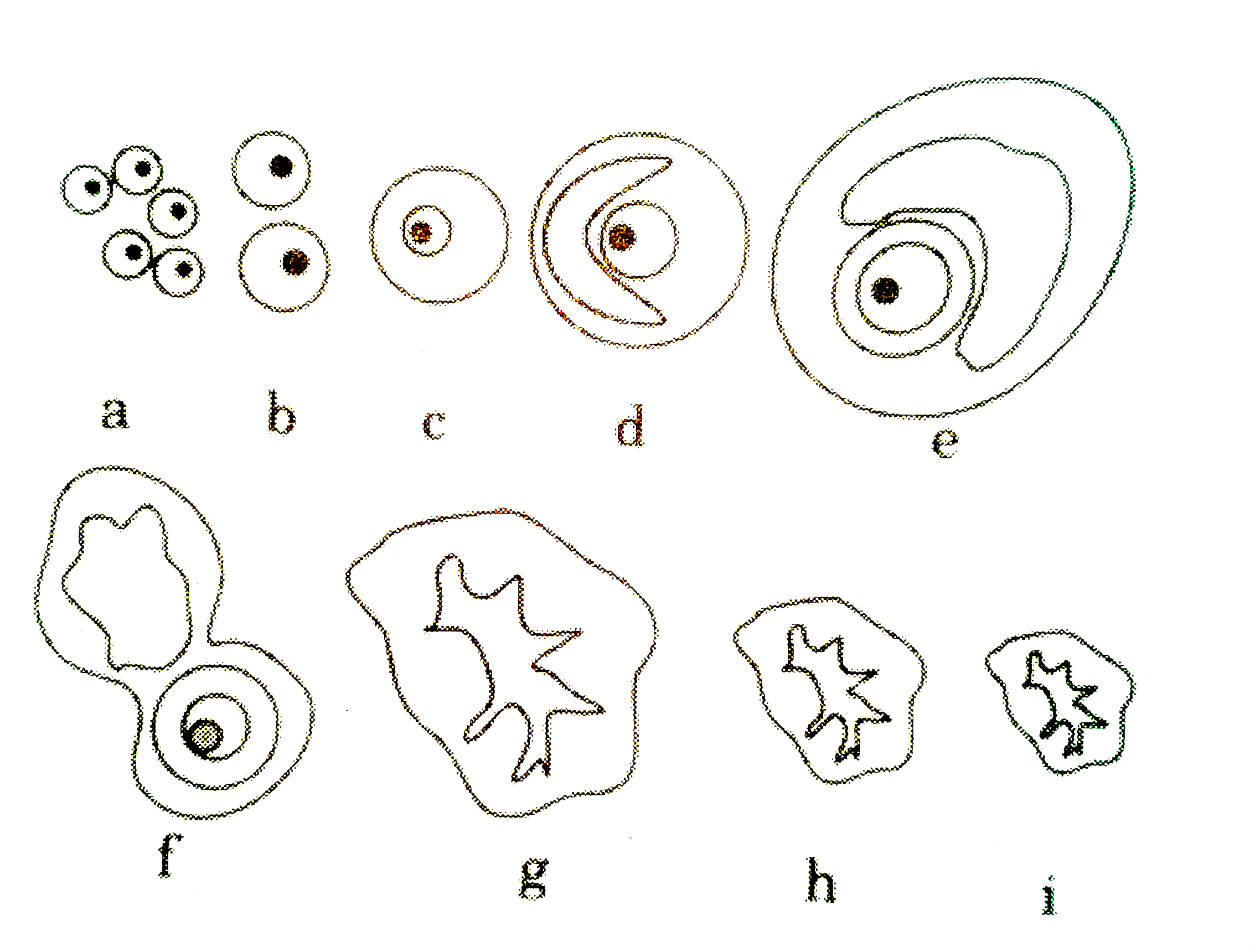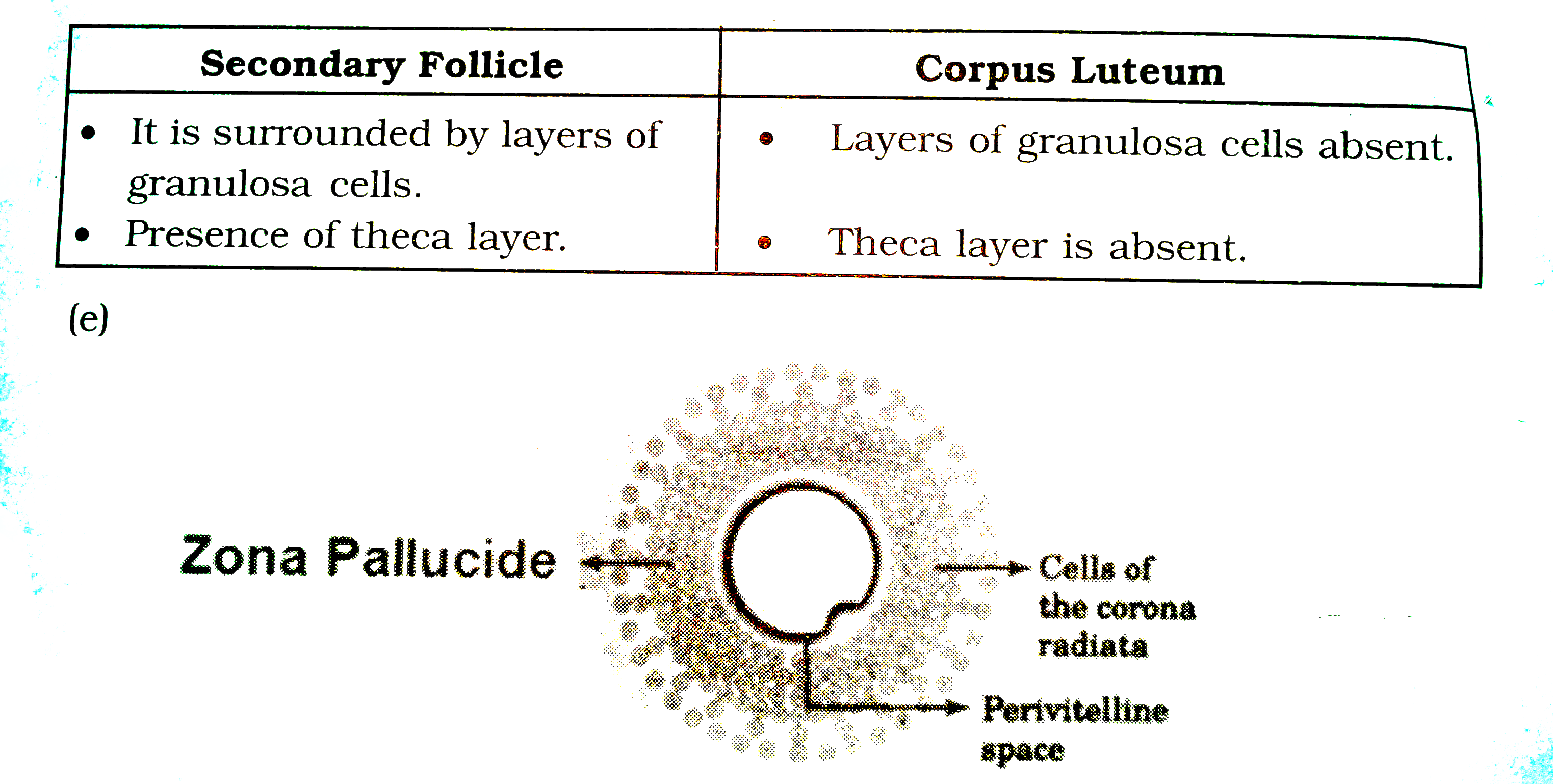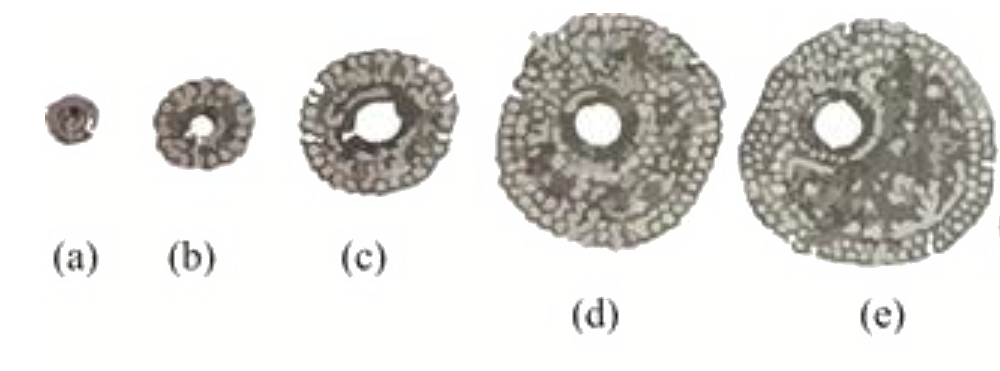The following is the illustration of the sequence of ovarian events (a - 1) in a human female. (a) Identify the figure that illustrates ovulation and mention the stage of oogenesis it represents.
(b) Name the pituitary hormone that has caused the above mentioned event.
(c) Explain the changes that occur in the uterus simultaneously in anticipation
(d) Write the differences between 'c and 'h'.
(e ) Draw a labelled sketch of the structure of a human ovum prior to fertilization.

(a)Figure 'f illustrates ovulation. It represents the ovulatory stage of oogenesis
(b) Luteinizing Hormone (LH) is the pituitary hormone released during ovulation
(c) In anticipation of receiving the fertilized egg. the endometrium of the uterus gets thickened and also the blood supply to the endometrium increases
(d) In the figure (c) stage represents the secondary follicle and the th) stage represents the degenerating corpus luteum

Topper's Solved these Questions
- REPRODUCTIONBOOK - TRUEMAN BIOLOGYCHAPTER - REPRODUCTIONEXERCISE - SECTION -C
22 Videos
- Protista BOOK - TRUEMAN BIOLOGYCHAPTER - Protista EXERCISE - ASSERTION AND REASON
5 Videos
- Reproduction In OrganismsBOOK - TRUEMAN BIOLOGYCHAPTER - Reproduction In OrganismsEXERCISE - MULTIPLE CHOICE QUESTION
128 Videos
Similar Questions
The following is the illustration of the sequence of ovarian events (a - i) in human female.

(i) Identify the figure that illustrates ovulation and mention the stage of oogenesis it represents.
(ii) Name the ovarian hormone and the pituitary hormone that have caused the above mentioned event.
(iii) Explain the changes that occur in the uterus simultaneously in anticipation.
(iv) Write the difference between 'c' and 'h'
(v) Draw a labelled sketch of the structure of a human ovum prior to fertilization.
View SolutionThe following is the illustration of the sequence of ovarian events "a" to "I" in a human female :


Identify developing follicle, mature follicles and corpus luteum.
View Solution
Knowledge Check
Choose the correct sequence of events that occur in human reproduct
AGametogenesis→Gastrulation→Inseminatin →Fertilization → Implantation → ParturitionBGametogenesis → Insemination → Gestation → Implantation → Fertilization → ParturitionCGametogenesis → Insemination → Fertilization → Implantation → Gestration → ParturitionDInsemination 'to' Fertilization 'to' Implantation 'to' Gametogenesis 'to' Gestration 'to' ParturitionAt what stage of life is oogenesis initiated in a human female?
AAt pubertyBDuring menarcheCDuring menopauseDDuring embryonic development
The following is the illustration of the sequence of ovarian events ''a'' to ''I'' in a human female :

(a) Identify the figure that illustrates corpus luteum and name the pituitar) hormone that inhuences its formation.
(b) Specify the endocrine function of corpus luteum. How does it influence the uterus? Why is it essential?
(c) What is the difference between “d” and “e”?
(d) Draw a neat labelled sketch of Graafian follicle.
View SolutionName the pituitary hormones. Mention the function of each.
View SolutionMention the changes that take place m the uterus in the above phase.
View SolutionDescribe the changes that occurs in ovaries and uterus in human female during the reproductive cycle .
View SolutionExplain the development of a secondary oocyte ( ovum) in a human female from the embryonic stage upto its ovulation. Name the hormones involved in this process.
View SolutionThe hormone that is responsible for secretion of testosterone in males also plays a significant role in females. Identify the hormone and mention its role in females.
View Solution
